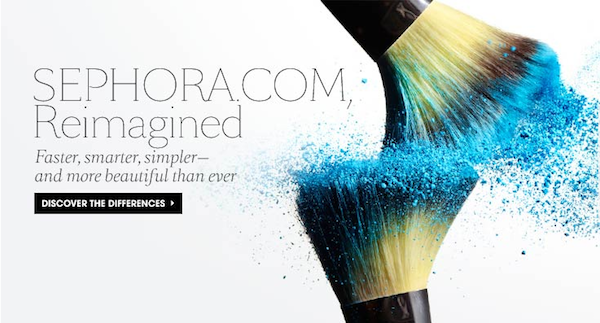
Amazon has completely changed the way that consumers shop and what they expect from their shopping experience from start to finish. One of the consequences: Retailers are left with websites that feel more like catalogs, particularly since some of these sites were built for the dot-com era rather than today’s world..
Sephora is a case in point of a retailer playing catch up to Amazon. It recently revamped its digital retail experience for the first time in over a decade. In an article in the San Francisco Chronicle, a Sephora exec says that while the focus of the new offerings was improving customers’ digital experiences, it also had a lot to do with keeping physical stores relevant in a time when retailers are struggling to compete with Amazon.
Brian Kilkourse, managing partner at RSR Research, calls this “The Amazon Effect.” The idea is that retailers need to be figuring out ways to entice consumers to come into physical stores and to shop retail websites instead of going directly to Amazon, which is a major reason longstanding retailers like Circuit City and Borders are dead. These retailers weren’t fast enough to adapt to digital channels and make their in-store experience worthwhile.
“What the danger is for retailers [who aren’t living up to this new era of shopping] is disintermediation,” Kilkourse said. “Shopping is social and fulfills more than just the need to buy something. It fulfills the need of being a part of something, interacting with a community. People have been empowered by the Internet and expect the salespeople in stores to know more than they do. What retailers need to do is turn their employees into brand ambassadors.”
The Sephora makeover, which includes new apps, was long overdue. Incredibly, the makeup chain hadn’t overhauled its Web experience since 1999, which is practically the paleolithic era. The new desktop site has revamped its search functionality. Each product on Sephora.com has been tagged and indexed with 25 different characteristics — from data like target age group, to specific ingredients, formulations, fragrance, price and more — to help consumers find exactly what they are looking for. The Sephora.com makeover also includes 80,000 additional images, product quick-views, more color views and faster checkout. Shoppers can also check in-store availability, create favorite product lists, learn the latest trends, get personalized advice, watch tutorials from Sephora’s editors and interact with experts.
Sephora is also modernizing with a deep Pinterest integration. The Pin It button is on every product page, letting users pin any of the 14,000 products from Sephora.com. Fans can also check out Sephora inspiration boards, highlighting current looks and new products. Additionally, Sephora’s new feed on Instagram will give followers a behind-the-scenes look at the company and its staff and what trends and products are driving buzz in the beauty world. Getting more social allows for more virality in the promotion of Sephora products and is definitely affecting Sephora’s SEO in a positive way.
“Within a few months of it getting mass, we saw Pinterest become a significant source of traffic to Sephora.com, second to Facebook,” said Julie Bornstein, svp of Sephora Digital. “Pinterest is gaining a lot of momentum and interest, both through the visual experience and the way it’s connected to Facebook. We see social shopping as the next big thing for retail, and with Pinterest, we see an opportunity to engage with our customers where they are at.”
More in Marketing

The anatomy of an agency chief client officer
Several major agencies have moved to appoint chief client officers to their top cohorts lately.

How marketers rank this year’s generative AI image, video tools
Digiday’s 2025 agency generative AI report card explores the winners and losers of the generative AI landscape.

In memoriam: Brands we lost in 2025
Digiday Media staff rounded up some of the most notable brand names we lost in 2025, like Joann and Rite Aid.





